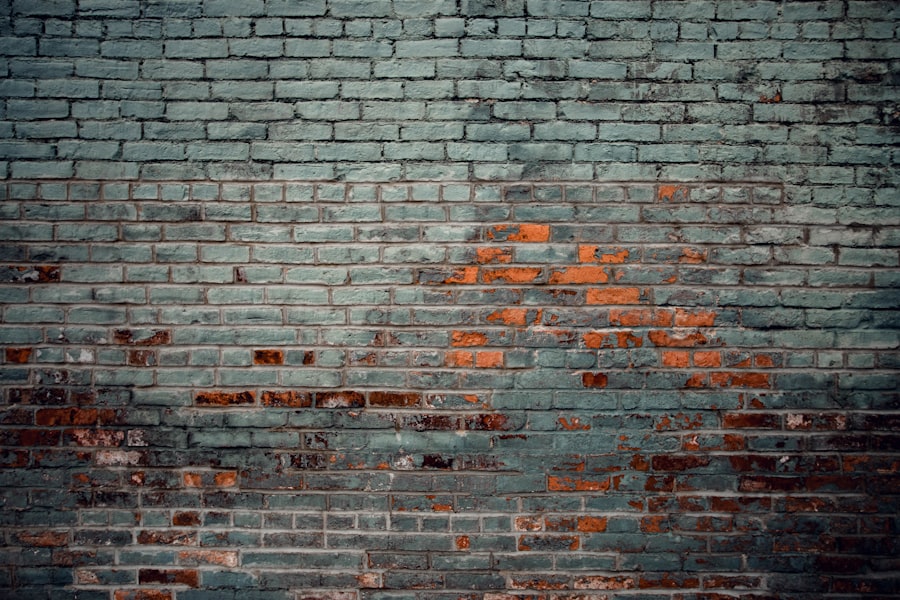Cracks in walls and ceilings can be a source of concern for homeowners, often leading to questions about the structural integrity of their homes. Understanding the underlying causes of these cracks is essential for effective management and repair. One of the primary reasons for cracks is the natural settling of a house.
As a building ages, it undergoes a process of settling, which can lead to minor shifts in the foundation and framing. This settling can create small fissures in walls and ceilings, particularly in newer constructions where the materials are still adjusting to their environment. Another significant factor contributing to wall and ceiling cracks is temperature fluctuations.
Homes expand and contract with changes in temperature, which can put stress on the materials used in construction. For instance, during hot weather, materials like wood and drywall may expand, while colder temperatures can cause them to contract. This constant cycle of expansion and contraction can lead to cracks over time, especially if the materials are not flexible enough to accommodate these changes.
Additionally, poor construction practices, such as inadequate framing or the use of substandard materials, can exacerbate the problem, leading to more pronounced cracking.
Key Takeaways
- Wall and ceiling cracks can be caused by various factors such as settling of the foundation, temperature changes, moisture, and structural issues.
- Different types of cracks include hairline cracks, vertical cracks, diagonal cracks, and horizontal cracks, each indicating different underlying issues.
- The severity of cracks can be assessed based on the width, length, and location of the crack, as well as any accompanying signs of structural damage.
- DIY repair techniques for small cracks include using spackling paste, joint compound, or mesh tape to fill and seal the cracks.
- Hiring a professional is necessary for larger cracks that may indicate serious structural issues and require professional expertise and equipment for repair.
Identifying Different Types of Cracks
Cracks can vary significantly in appearance and severity, and identifying the type of crack is crucial for determining the appropriate course of action. Hairline cracks are among the most common types found in homes. These thin fissures often appear in drywall or plaster and are typically not a cause for alarm.
They may result from minor settling or temperature changes and can often be easily repaired with a bit of spackling compound. On the other hand, larger cracks that are wider than a quarter-inch may indicate more serious issues. These cracks can be vertical, horizontal, or diagonal and may suggest problems with the foundation or structural elements of the home.
Diagonal cracks, in particular, can be indicative of foundation settlement or shifting, while horizontal cracks may signal more severe structural issues that require immediate attention. Homeowners should take note of the size and direction of cracks to assess their potential implications accurately.
Assessing the Severity of Cracks

Once cracks have been identified, assessing their severity becomes paramount. Homeowners should consider several factors when evaluating cracks, including their size, location, and progression over time. Small hairline cracks that do not seem to change may be benign and require minimal intervention.
However, if a crack appears to widen or deepen over time, it may indicate an underlying issue that needs to be addressed. In addition to size and progression, the location of a crack can provide valuable insights into its severity. Cracks located near doorways or windows may suggest issues with framing or settling, while those found in load-bearing walls could indicate more serious structural problems.
Homeowners should also monitor any signs of moisture or water damage around cracks, as this can further complicate the situation and necessitate professional evaluation.
DIY Repair Techniques for Small Cracks
| Technique | Materials Needed | Time Required | Effectiveness |
|---|---|---|---|
| Applying epoxy resin | Epoxy resin, mixing tools, sandpaper | 1-2 hours | Effective for small cracks |
| Using concrete patching compound | Patching compound, trowel, water | 30 minutes to 1 hour | Good for small surface cracks |
| Applying silicone caulk | Silicone caulk, caulk gun, utility knife | 30 minutes | Temporary fix for hairline cracks |
For minor cracks, homeowners often find that DIY repair techniques are both effective and economical. The first step in addressing small cracks is to clean the area thoroughly to remove any dust or debris that could interfere with adhesion. Once cleaned, a spackling compound or joint compound can be applied using a putty knife.
It is essential to fill the crack completely and smooth it out to ensure a seamless finish. After allowing the compound to dry according to the manufacturer’s instructions, homeowners can sand the area lightly to create an even surface. Once sanded, painting over the repaired area can help blend it with the surrounding wall or ceiling.
This simple process can restore the appearance of walls and ceilings without requiring extensive repairs or professional assistance.
Hiring a Professional for Larger Cracks
While DIY techniques are suitable for minor repairs, larger cracks often necessitate professional intervention. Homeowners should consider hiring a contractor or structural engineer when faced with significant cracks that indicate potential structural issues. Professionals have the expertise to assess the situation accurately and determine whether repairs are needed or if further investigation is warranted.
In many cases, professionals will conduct a thorough inspection of the property to identify any underlying problems contributing to the cracking. This may involve examining the foundation, checking for signs of water damage, or assessing the overall structural integrity of the home. Once a comprehensive evaluation is complete, they can recommend appropriate repair methods, which may include underpinning, wall bracing, or other structural reinforcements.
Preventing Future Cracks

Proper Drainage Around the Foundation
Poor drainage can lead to water accumulation near the foundation, which can cause soil erosion and settlement issues over time. Installing gutters and downspouts that direct water away from the house can significantly reduce this risk.
Maintaining Consistent Indoor Humidity
Maintaining consistent indoor humidity levels can help prevent cracks caused by temperature fluctuations. Using humidifiers during dry seasons and ensuring proper ventilation can create a more stable environment for building materials.
Regular Inspections of Plumbing Systems
Regular inspections of plumbing systems for leaks can also prevent moisture-related issues that contribute to cracking.
Understanding the Role of Moisture in Crack Formation
Moisture plays a critical role in the formation of cracks within walls and ceilings. Excess moisture can weaken building materials over time, leading to deterioration and eventual cracking. For instance, water intrusion from leaks or flooding can saturate drywall and plaster, causing them to lose their structural integrity.
This saturation often results in bulging walls or ceilings and ultimately leads to cracking as materials dry out and shrink. Moreover, high humidity levels within a home can contribute to mold growth and further damage building materials. Homeowners should be vigilant about monitoring moisture levels in their homes and addressing any leaks or water intrusion promptly.
Implementing proper ventilation systems in areas prone to moisture buildup, such as bathrooms and kitchens, can also help mitigate these risks.
Maintaining the Structural Integrity of Your Home
Maintaining the structural integrity of a home is an ongoing responsibility that requires attention to detail and proactive measures. Regular inspections are vital for identifying potential issues before they escalate into significant problems. Homeowners should periodically check for signs of cracking, water damage, or other indicators of structural distress.
In addition to inspections, investing in routine maintenance is essential for preserving a home’s integrity. This includes ensuring that gutters are clean and functioning correctly, sealing any gaps around windows and doors, and addressing any drainage issues promptly. By taking these steps, homeowners can protect their investment and ensure that their homes remain safe and structurally sound for years to come.
In conclusion, understanding wall and ceiling cracks involves recognizing their causes, types, severity, and appropriate repair methods. While minor cracks may be manageable through DIY techniques, larger issues often require professional assessment and intervention. By prioritizing prevention strategies and maintaining overall home integrity, homeowners can minimize the risk of future cracking and ensure their living spaces remain comfortable and secure.
If you are dealing with wall or ceiling cracks in your home, it may be a sign of a larger issue that needs to be addressed. In a related article on Candybird, there is a step-by-step guide to painting your walls like a pro, which can help transform your space and cover up any unsightly cracks. By following expert tips and techniques, you can give your walls a fresh new look while also addressing any underlying structural issues that may be causing the cracks. Check out the article here for more information.
FAQs
What causes wall or ceiling cracks?
Wall or ceiling cracks can be caused by a variety of factors, including settling of the foundation, changes in temperature and humidity, structural issues, or poor construction techniques.
How can I prevent wall or ceiling cracks?
To prevent wall or ceiling cracks, it’s important to address any underlying issues such as foundation problems, maintain consistent temperature and humidity levels, and ensure proper construction techniques are used during building or renovation.
When should I be concerned about wall or ceiling cracks?
You should be concerned about wall or ceiling cracks if they are large, growing in size, or accompanied by other signs of structural issues such as uneven floors, doors or windows that stick, or visible gaps in the walls or ceilings.
How can I repair wall or ceiling cracks?
Repairing wall or ceiling cracks typically involves filling the crack with spackling or joint compound, sanding it smooth, and then repainting the area. For larger or more serious cracks, it may be necessary to consult a professional contractor.
Are wall or ceiling cracks a sign of a serious problem?
While some wall or ceiling cracks may be purely cosmetic, others can indicate more serious structural issues. It’s important to have any cracks evaluated by a professional to determine the underlying cause and necessary repairs.






